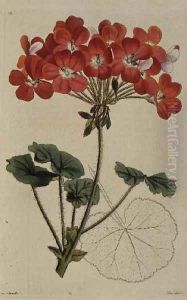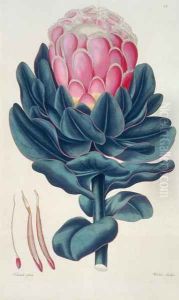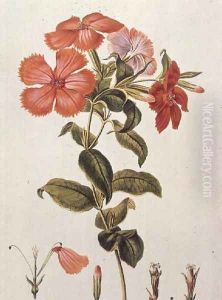Leopold Trattinick Paintings
Leopold Trattinick was an Austrian botanist, mycologist, and physician, born on May 26, 1764, in Graz, Austria. He was known primarily for his work in the field of botany, with a particular focus on plant taxonomy and mycology, the study of fungi. Trattinick's contributions to botany were significant during the late 18th and early 19th centuries, a period when the scientific community was engaged in the extensive classification and cataloging of plant species.
Trattinick studied medicine at the University of Vienna and later shifted his focus to botany. He became the director of the Vienna Botanical Garden in 1806 and held the position until 1820. Throughout his career, he was deeply involved in the research and study of plants and fungi, and he published numerous works on these subjects. His most notable publications include 'Observationes Botanicae' (1804), 'Genera Plantarum Methodo Naturali Disposita' (1805), and 'Die eßbaren Schwämme des Oesterreichischen Kaiserstaates' (the edible fungi of the Austrian Empire, 1830).
One of Trattinick's most significant contributions was his efforts in classifying fungi, which was a relatively less understood domain of botany at the time. His work laid the foundation for future mycologists and helped bring clarity to the classification and identification of various fungal species. Aside from his taxonomic work, he was also interested in the practical uses of plants, including their culinary and medicinal applications.
Leopold Trattinick was an important figure in the botanical sciences, and his work was influential in the development of botanical gardens and the study of plant life in Austria. He was part of a broader movement in the scientific community that sought to understand the natural world through careful observation and classification. Trattinick passed away on May 11, 1849, in Vienna, leaving behind a legacy of scientific inquiry that would benefit future generations of botanists and mycologists.


